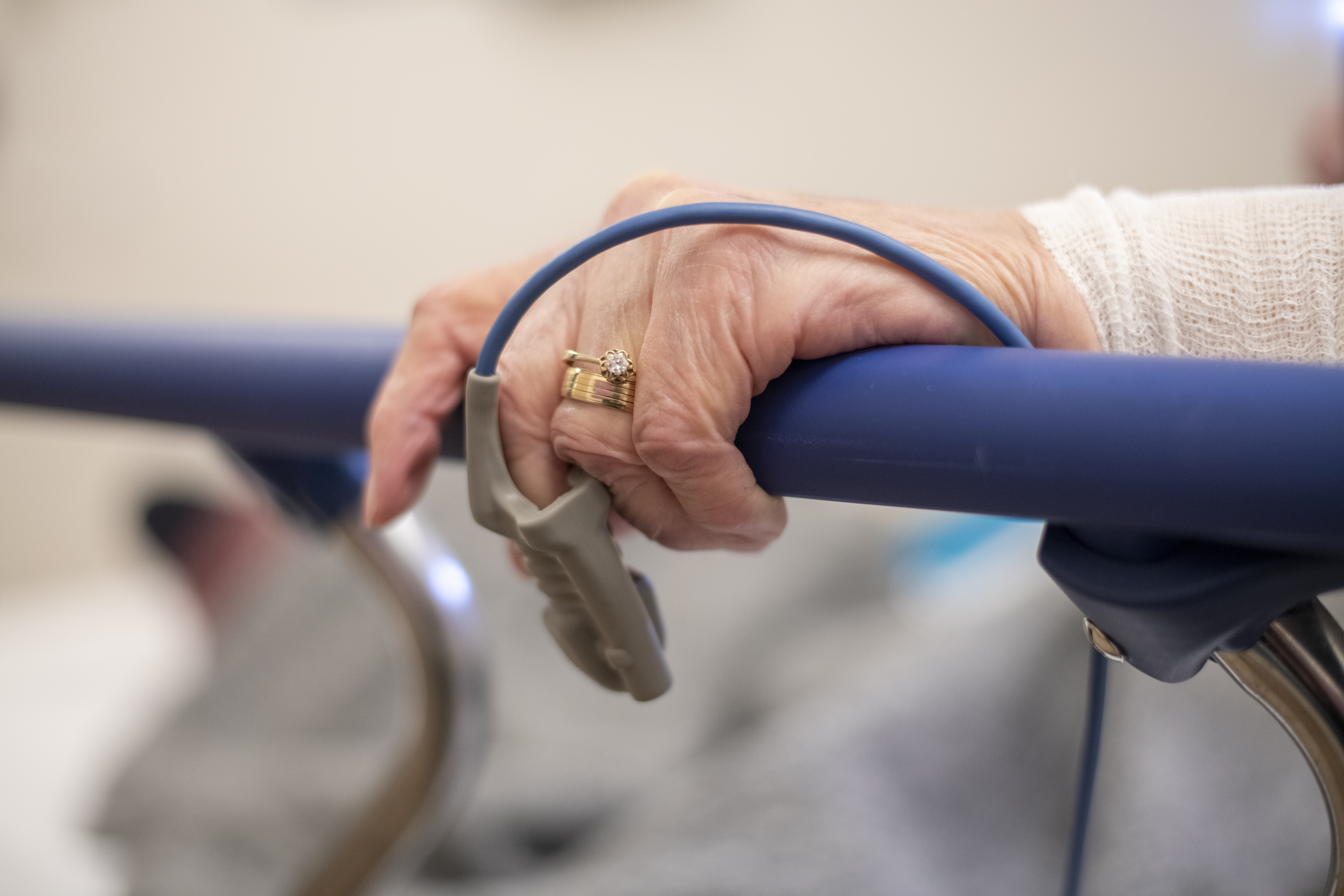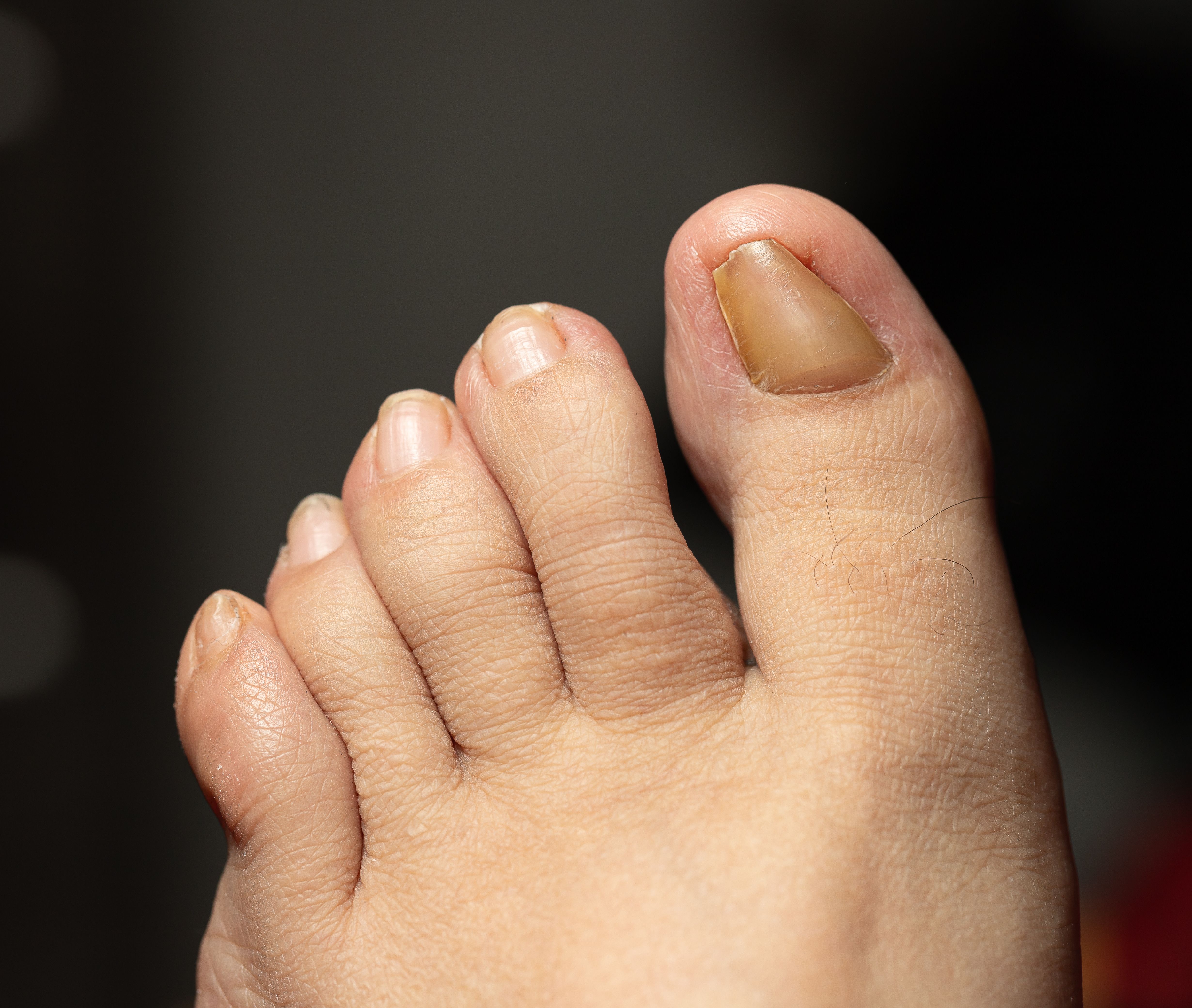20 Symptoms of Endocarditis to Look Out For
Endocarditis might not be a term you hear every day, but recognizing its warning signs could save a life—possibly your own. This serious infection targets the endocardium, the delicate inner lining of the heart chambers and valves. When harmful bacteria or fungi enter the bloodstream—often through dental procedures, body piercings, IV drug use, or even untreated skin sores—they can latch onto damaged heart tissue and trigger dangerous inflammation. Left unchecked, endocarditis can lead to irreversible heart valve damage, stroke, or even death. Because the symptoms can be subtle or mimic less serious conditions, early detection is crucial. Diagnosis typically involves a combination of blood tests, imaging (like CT scans or echocardiograms), and electrocardiograms. To help you stay informed and vigilant, we’ve expanded our guide to include 20 symptoms of endocarditis you shouldn’t ignore. Knowing what to look for could make all the difference—because when it comes to heart health, timing is everything.
1. Muscle And Joint Aches

Over forty percent of endocarditis patients experience muscle and joint aches. Joint aches that result from endocarditis typically only affect one to three joints. This joint and muscle pain also manifests in a pattern that is not symmetrical. The pain complaints in such individuals are said to be similar to those observed in individuals affected by rheumatoid arthritis, Lyme disease, and Reiter's syndrome. This symptom occurs when the endocarditis causing pathogen mobilizes and attacks the synovial membranes and fluids of the joints. The pathogen colonizes in the synovial fluid that sits between the joints and summons an immunological response. This mechanism causes blood vessel dilation, redness, swelling, and inflammation in the affected joints. When the synovial fluid becomes inflamed, the affected individual will experience sensations of pain because it cannot provide lubrication and protection to the bones. Joint and muscle pain are most commonly reported in endocarditis patients in their shoulders, knees, and back. In many patients, muscle and joint pain can be the first symptomatic manifestation of endocarditis. These pains can show up months before other symptoms, causing many physicians to overlook endocarditis as the underlying cause.
2. Night Sweats

An individual who experiences night sweats may be affected by endocarditis. The medical definition of night sweats is a drenching sweat that prompts the affected individual to change their pajamas and sheets several times per week. Night sweats occur as an adverse effect of numerous different types of infections, including endocarditis. An affected individual's immune system responds to the infection-causing pathogen in several ways. One way is to prompt the brain to adjust the body's internal thermostat to a higher baseline temperature. This mechanism is meant to make the environment inhospitable for the pathogen causing endocarditis or any other infection. However, the body makes sure the high temperature does not become too high due to the serious consequences and damage an extremely high fever causes. When a patient with an infection has a fever that is becoming too high, the body initiates its cooling mechanism called sweating. This process involves the release of salt and water from the skin through the sweat glands. As the water dampens the skin, it is evaporated into the air. Heat accompanies the water evaporated from the skin, lowering the body's core temperature. These temperature fluctuations may occur several times during the night from endocarditis.
3. Heart Murmur

A new or changed heart murmur can indicate an individual has endocarditis. A healthy heart when listened to has two distinct sounds, a lub noise, and a dub noise. The lub sound is produced by the closing of the tricuspid and mitral valves. The dub sound is produced by the closing of the aortic and pulmonic valves. A heart murmur is an abnormal sound of swishing when listening to the heart. Abnormal or turbulent blood flow through or across a valve in the heart causes a heart murmur. Endocarditis can progress quickly and severely, or it may progress slowly and subtly. Many forms of acute endocarditis are caused by a direct pathogenic attack on a valve within the heart that rapidly causes damage to the previously normal valve tissue. Anytime a valve in the heart becomes damaged, the flow of blood through or across it becomes altered and produces an abnormal sound. A new heart murmur is most often associated with the acute forms of endocarditis, where a change in an existing heart murmur is most often associated with the subacute forms of endocarditis.
4. Swelling In The Feet And Legs

Endocarditis can produce swelling in the feet and legs of individuals affected by it. This symptom is common in individuals who had existing heart disease or conditions before developing endocarditis. Endocarditis causes the existing heart condition to progress or worsen, resulting in decompensated heart failure with obvious symptoms. Swelling in the feet and legs or peripheral edema occurs when the heart begins to fail. Blood moves through the veins in the body back to the right chambers of the heart. It moves through the lungs and back through the left chambers of the heart before it is then pumped back around the body. When endocarditis causes damage to the heart that results in reduced function, the blood in the veins can get backed up because the right side of the heart is unable to keep up. Excess blood can settle in the veins of the feet and legs, eventually forcing fluids out of the vessel walls into surrounding tissues. This excess fluid in the tissues is called edema, and it occurs in the lower peripherals due to the force of gravity. Swelling in the feet and legs is typically not one of the first symptoms to manifest in an endocarditis patient.
5. Fever And Chills

Most individuals affected by endocarditis experience a fever and chills. There are two main reasons why this commonly appears in individuals with infections like endocarditis caused by harmful pathogens. Bacteria, viruses, fungi, and parasites have different preferences when it comes to their environment and how well they can thrive in it. Some pathogens cannot perform their reproductive and colonization functions in a hyperthermic environment. The body implements this defense mechanism to all pathogens that are in the process of making the body their new home. Not only does this help create an environment where the pathogen has trouble reproducing, but it has also been shown to have certain influences on the immune system components themselves. White blood cells called T-cells are part of the immune system and work to destroy other cells that are malignant or infected by pathogens. Recent studies have proven a hyperthermic environment enhances the activity of these T-cells. It is the immune system signaling the brain to raise the core temperature of the body that causes patients to have a fever and chills.
6. Pale Skin

Endocarditis is a type of infection where bacteria attach to the inner valves of an affected individual's heart muscle. A heart valve is a flap of tissue that opens and closes to regulate blood flow in the upper and lower chambers of the heart. An infection that develops on the leaflets of these valves in the heart can cause them to become inflamed and unable to do their job properly. When the valves do not open and close when they should, the flow of blood through the individual's heart becomes impaired. As a result of this malfunction, blood flows backward or regurgitates into the prior chamber or blood can experience a decrease in flow when the leaflets of the valve become too stiff to open all the way. When the heart cannot pump enough oxygenated blood through the body properly, the individual will experience a pale color to their skin because of the way oxygen-poor blood reflects light.
7. Nausea

An individual affected by a form of endocarditis called subacute endocarditis may experience nausea, a sensation where an individual feels they need to vomit. Vomit is the forceful movement of food from the stomach to the outside of the mouth. Vomiting is a mechanism in the body that attempts to remove the source of toxicity when the levels of toxins in the blood become too high. Endocarditis can cause patients to develop clots of debris in their circulation. These emboli that float around in the bloodstream of an individual with endocarditis eventually make it to the kidneys where impurities are filtered out of the blood. The emboli become lodged in the blood vessels of an affected individual's kidneys, stopping the flow of blood to the kidney tissues. This obstruction of oxygen-rich blood to the kidney tissues causes areas of infarction or cells that shut down due to oxygen deprivation. This causes the kidneys to work poorly and allows toxins to build up in the blood, which is what produces nausea.
8. Unintentional Weight Loss

Weight loss occurs when an individual's energy balance ratio becomes negative instead of neutral or positive. An individual's energy balance is the number of calories they take in comparison to the number of calories their body burns. An individual will gain weight when they are taking in more calories than they are burning off (positive energy balance). An individual will lose weight when they are consuming fewer calories than their body is burning off (negative energy balance). Cells around the body use calories by converting them into usable cellular energy. A healthy individual's body will be able to maintain a neutral energy balance on a healthy diet, but an individual affected by any form of infection is going to burn more calories than someone who does not have an infection in their body. This negative energy balance occurs in endocarditis because the bacteria causing the heart infection need calories and glucose to carry out their functions the same way healthy cells in the body do.
9. Shortness Of Breath Or Coughing

Endocarditis develops when bacteria attach to vulnerable parts of the heart tissue and colonize. The valves of the heart are the most affected structures in the heart by bacterial endocarditis. Subacute endocarditis causes the tissues that make up the leaflets in the heart to become damaged to the point where the body initiates the mechanism used to repair damaged tissues. When this process occurs frequently over time, scar tissue begins to build on the valve leaflets because damaged tissue is replaced with dense and fibrous tissue. The buildup of fibrous scar tissue on the valve leaflets causes them to be unable to open properly. If this scar tissue from endocarditis builds on one of the pulmonary valves, it can cause blood to back up into the lungs. When blood backs up in the lungs it causes pulmonary hypertension, which produces symptoms like coughing and shortness of breath.
10. Blood In The Urine

Most individuals affected by blood in the urine (hematuria) due to endocarditis are affected by subacute endocarditis that has developed over time. The emboli that form in an affected individual's blood due to the infection in their heart become lodged in the kidneys and can cause sections of the kidney tissue to shut down or die. This damage to the kidney tissues is the result of infarcts in the organs due to an obstruction of oxygenated blood. When the infection in an individual's heart moves to their kidneys, it can cause them to develop a condition referred to as interstitial nephritis. Interstitial nephritis causes the tissues of the kidneys to swell and become damaged, which can leak blood into the urine. If an individual's endocarditis is caused by an infection with streptococcus bacteria, they can develop an infection in the kidneys called proliferative glomerulonephritis.
11. Petechiae

Petechiae—tiny red or purple dots on the skin—are a subtle yet significant sign of endocarditis. These pinpoint hemorrhages result from broken capillaries and commonly appear on the chest, lower legs, mucous membranes, or under the fingernails (splinter hemorrhages). They indicate small blood vessel damage often caused by circulating immune complexes or emboli. While petechiae can occur in various conditions, their presence in combination with fever, fatigue, or a heart murmur should raise red flags. Many physicians overlook them because they are painless and easy to miss. But in the context of endocarditis, these specks may be the body’s first visible SOS.
12. Osler’s Nodes

Osler’s nodes are painful, red or purple bumps that typically form on the fingers and toes of patients with subacute bacterial endocarditis. These tender nodules arise from immune complex deposition and inflammation within the small vessels of the skin. Though rare, their appearance is diagnostically valuable. Unlike petechiae or splinter hemorrhages, Osler’s nodes are painful to touch and often come and go within hours or days. Their presence points to an ongoing immune battle in the bloodstream and strongly suggests underlying infective endocarditis—particularly in patients with known risk factors like prosthetic valves or IV drug use.
13. Janeway Lesions

Janeway lesions are non-tender, flat or slightly raised red spots usually found on the palms and soles. Unlike Osler’s nodes, they’re painless and are caused by septic microemboli lodging in the skin. Their diagnostic value lies in their specificity to infective endocarditis. Janeway lesions may be missed without a careful skin exam, especially in darker skin tones. These lesions typically appear in acute bacterial endocarditis and signify systemic embolic spread. Their discovery in a patient with fever, murmur, and systemic signs should prompt immediate investigation and empiric antibiotic treatment while cultures are pending.
14. Stroke or Neurological Deficits

A devastating but all-too-common complication of endocarditis is embolic stroke. Vegetations on the heart valves can break off and travel through the bloodstream to the brain, causing sudden neurological symptoms—paralysis, slurred speech, vision changes, or confusion. In fact, stroke may be the presenting symptom of endocarditis in patients with no prior cardiac history. This makes prompt imaging and blood culture essential when a stroke has no clear vascular cause. Any new focal neurological deficit in a patient with signs of infection warrants urgent evaluation for embolic events from endocarditis.
15. Splinter Hemorrhages

Splinter hemorrhages are thin, red-to-brown lines under the fingernails or toenails, resembling wood splinters. They are caused by small clots that damage capillaries in the nail beds—often linked to infective endocarditis. While not exclusive to this condition, their presence in a febrile patient should trigger suspicion, especially if other signs like petechiae or a murmur coexist. Splinter hemorrhages are painless, transient, and easy to miss. But for the astute clinician, they are a subtle diagnostic clue pointing to a potentially life-threatening cardiac infection beneath the surface.
16. Abdominal Pain or Fullness

Abdominal discomfort in endocarditis often stems from embolic events or organ inflammation—particularly splenomegaly (an enlarged spleen). When emboli from infected heart valves lodge in the spleen or kidneys, they can cause infarcts that present as vague, persistent abdominal pain or fullness. This symptom is especially common in subacute cases and may be accompanied by tenderness in the left upper abdomen. In rare cases, splenic abscesses or rupture can develop. If a patient presents with unexplained abdominal symptoms and systemic infection signs, clinicians should consider imaging to evaluate for organ involvement tied to endocarditis.
17. Anemia

Chronic endocarditis can lead to anemia of inflammation—also known as anemia of chronic disease. The body, in its attempt to deprive bacteria of iron, alters red blood cell production, leading to fatigue, pallor, and weakness. Hemolysis due to valve destruction or microangiopathic damage can worsen the condition. Anemia in endocarditis is usually normocytic and normochromic, but it may be masked in patients who already have chronic illness. If unexplained anemia coexists with fever, weight loss, or murmurs, further investigation into an infectious cause, including blood cultures and echocardiography, becomes essential.
18. Difficulty Concentrating (Cognitive Fog)

Cognitive fog or trouble focusing isn’t often the first symptom one associates with endocarditis—but it’s common, especially in subacute forms. Chronic infection, poor oxygenation from heart valve dysfunction, and inflammatory cytokines all contribute to mental cloudiness. Patients may report forgetfulness, slowed thinking, or just feeling “off.” In elderly patients, these cognitive changes may be mistaken for dementia or delirium. When paired with fever, fatigue, or heart-related symptoms, cognitive fog should prompt consideration of a systemic infection—particularly endocarditis, which can smolder for weeks before escalating.
19. Persistent Fatigue

While fatigue is a universal symptom in many illnesses, the exhaustion experienced in endocarditis is deep and often unrelenting. It’s not just feeling tired—it’s a whole-body drain driven by ongoing immune activation, cardiac strain, and sometimes anemia. Patients may report an inability to complete daily tasks, needing excessive rest, or feeling “wiped out” even after minimal activity. This symptom often precedes more obvious signs like murmurs or embolic events and may persist long after antibiotic treatment begins. Persistent fatigue—especially when unexplained—should never be ignored in patients with known heart conditions.
20. Chest Pain

Though often overshadowed by fever or murmurs, chest pain can be a symptom of endocarditis—especially when related to pericarditis, pulmonary embolism, or infarcts from embolic spread. The pain may be sharp and localized or diffuse and pressure-like. In cases where the infection spreads beyond the endocardium, it can irritate surrounding tissues, including the pericardium (the sac around the heart) or even cause pulmonary infarctions. When patients with suspected endocarditis develop chest discomfort, immediate evaluation is needed to rule out life-threatening complications like abscess formation, pericardial effusion, or valve rupture.
Endocarditis is a master of disguise—often beginning with symptoms so subtle, they blend into the background of daily life. Fatigue, joint pain, night sweats, or even a few red dots on the skin might not raise alarms at first. But when viewed together, they form a vital narrative your body is trying to tell you. The consequences of missing the signs can be devastating: stroke, heart failure, or permanent damage. That’s why this expanded list of 20 symptoms matters. It isn’t about causing panic—it’s about giving you the power of foresight. Whether you're a healthcare professional, a caregiver, or someone managing a preexisting condition, awareness is the first line of defense. If something feels off—listen. Seek medical advice. Insist on answers. Because endocarditis isn’t just a heart condition; it’s a test of how well we pay attention to the signals our bodies send us. And sometimes, that attention can mean everything.